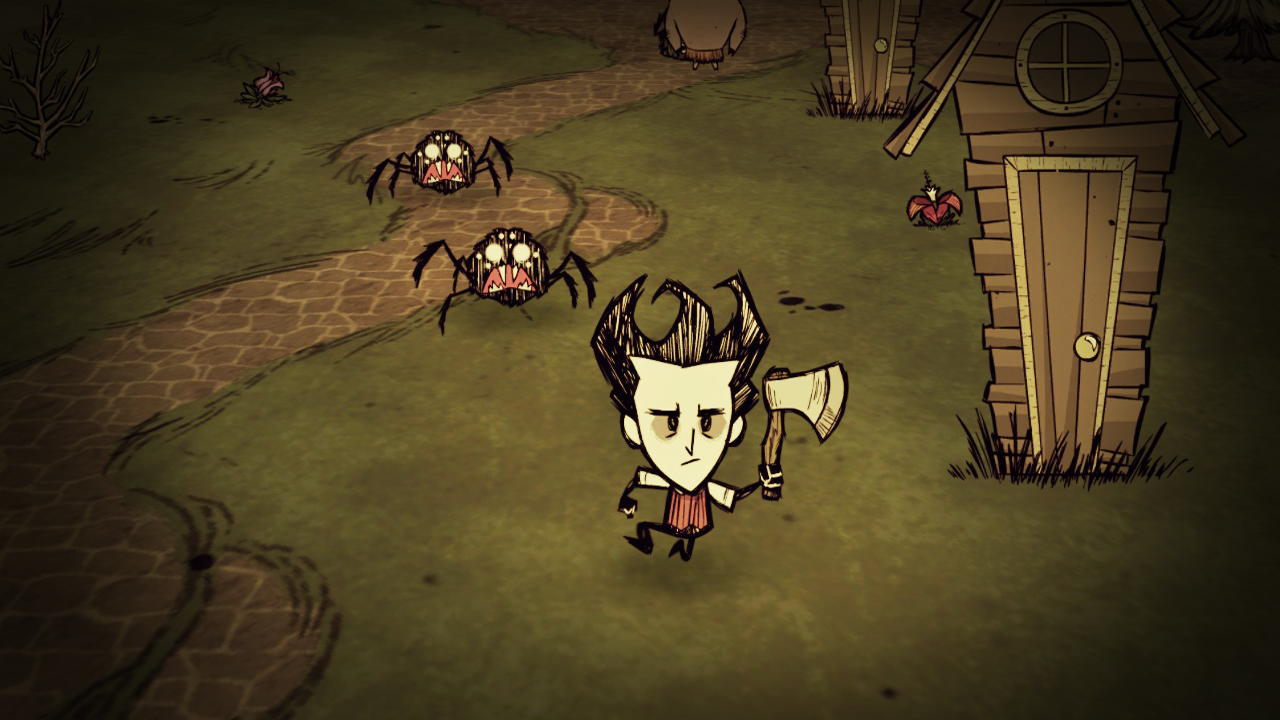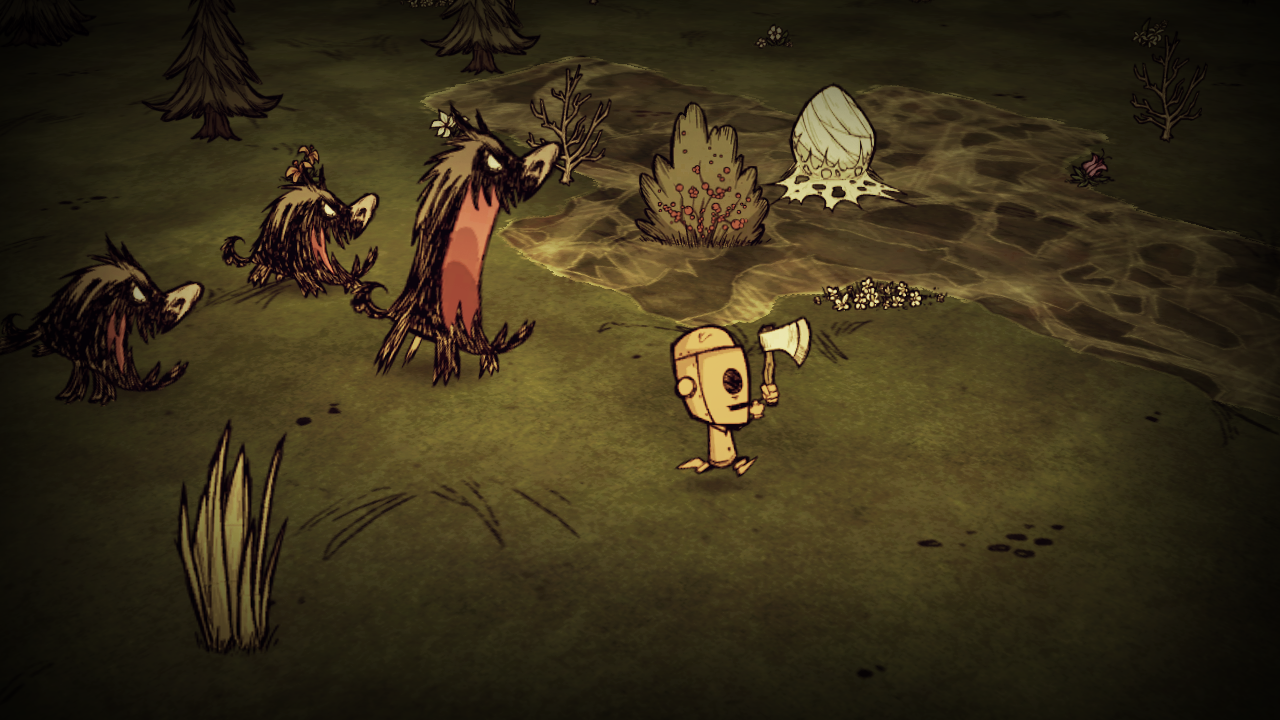I would like to start out by briefly examining the game studio Klei Entertainment.
Klei Entertainment (link) is an independent game studio located in Vancouver, Canada. The company was founded in 2005 by 24-year-old Jamie Cheng with the goal of producing games across a variety of genres and the ideal of retaining staff across games. Jamie Cheng joined up with Jeff Agala, an animator working in television animation, and began by producing the Flash puzzle game “Eets” in 2006. The company has currently produced 8 separate titles, all of which implement Flash in some fashion.
A specific example (and my favorite Klei titles) are their games “Don’t Starve” and “Don’t Starve Together”. Klei artists create sprites in Flash and build libraries of symbols for each character, item, mob enemy, boss monster, etc.
Although there are a variety of characters, Klei artists have developed a way to stream-line the time-consuming process of animating each sprite separately. Artists create characters in pieces (head, eyes, mouth, hands, body) and turn them into symbols. Flash is specifically used so that artists can export character sprites using a custom exporter to match symbols with previously animated actions. For instance, an artist will create an animation of a character chopping a tree. The artist can then draw a new character, and if they complete all the sprites, they can port that animation of the other character chopping the tree to the new character. The new character will then use that same animation. If one browses through the game files, one can easily see the various art used as symbols to help animate the various characters. You can check out a video of them explaining and going through an example of their process here (they really start talking about process around 16:20, and how Flash can mess up tweening around 52:00).
This process of creating libraries within Flash, animating a character, and then using that animation as a base to animate other symbols (and thus, other characters) is incredibly interesting to me. The 2D paper-cutout on a 3D world map art style of the game demands that artists must feign a 3D character by drawing a sprite from multiple angles, yet the way Flash is implemented allows for quick turnaround of characters and a level of consistency in gameplay.This way of thinking about how to approach animation in Flash could be beneficial for future projects.
Klei manages to achieve a hand-drawn, rough style while sticking in Flash, a program which naturally smooths things. They animate their characters using Flash puppetry, bones, and tweening, which you can see in the video. I highly recommend checking out videos of their most recent games, or playing them yourself to see how they implement flash animation firsthand. If you have the game, you can download a set of modding tools for free, which will allow you to take a closer look at the sprites in real time to see how a combination of swapping out symbols.



No comments:
Post a Comment